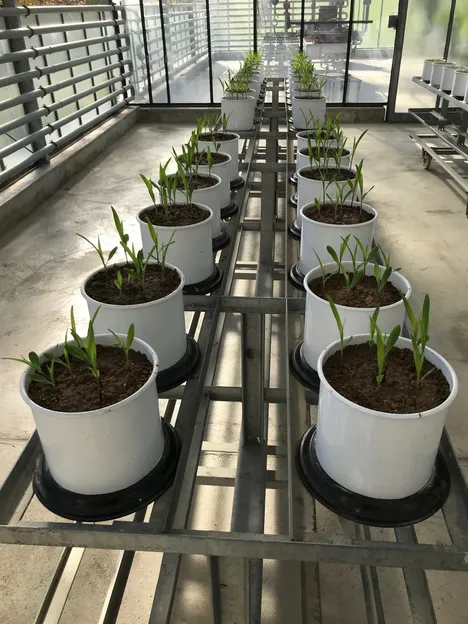Development of a strategy to use a stabilized ammonium fertilizer to improve the P supply to young plants from poorly soluble P-fertilizers and the P-soil stock to minimize the input of N and P from agricultural land into water bodies

In agriculture, the nutrients P and N are essential for plant nutrition. Nitrogen in the form of ammonia and after nitrification as nitrate is available to plants, and thus the risk of losses is increased, which contributes to a deterioration in groundwater quality. By contrast, the P-contents in the soil are mostly immobilized. One of the consequences of this is that particle transport (erosion) causes P to be displaced from the surface, leading to the eutrophication of water bodies.
In recent years, so-called nitrification inhibitors have been developed, which can stabilize the ammonium phase of a fertilizer for 4 to 6 weeks to mitigate loss.
There is initial evidence that spatial proximity of ammonium, nitrification inhibitor, and sparingly soluble phosphate in the fertilizer or soil could generate further benefits, namely, better recovery of sparingly soluble P compounds. However, the detailed knowledge about the mechanisms of action also in connection with so-called biostimulants is still largely missing.
A very important aspect here is the use of the pH dependence of the P-supply in the soil solution (optimally pH 5 to 6.5).
Basically, three overall economic and ecological relevant aims could be achieved in this way:
- The use of previously poor plant available P;
- The reduction of P-reserves in soils and, associated therewith, the pollution of waters by losses from the area; and
- The use of alternative P-sources to achieve partial closure of the P-cycle.
| Project leader | Prof. Dr. Brigitte Helmreich, Prof. Dr. Urs Schmidhalter |
| Researcher | Florian Ebertseder, M.Sc. |
| Cooperation | Lehrstuhl für Pflanzenernährung, TUM; Hochschule Weihenstephan-Triesdorf, HSWT |